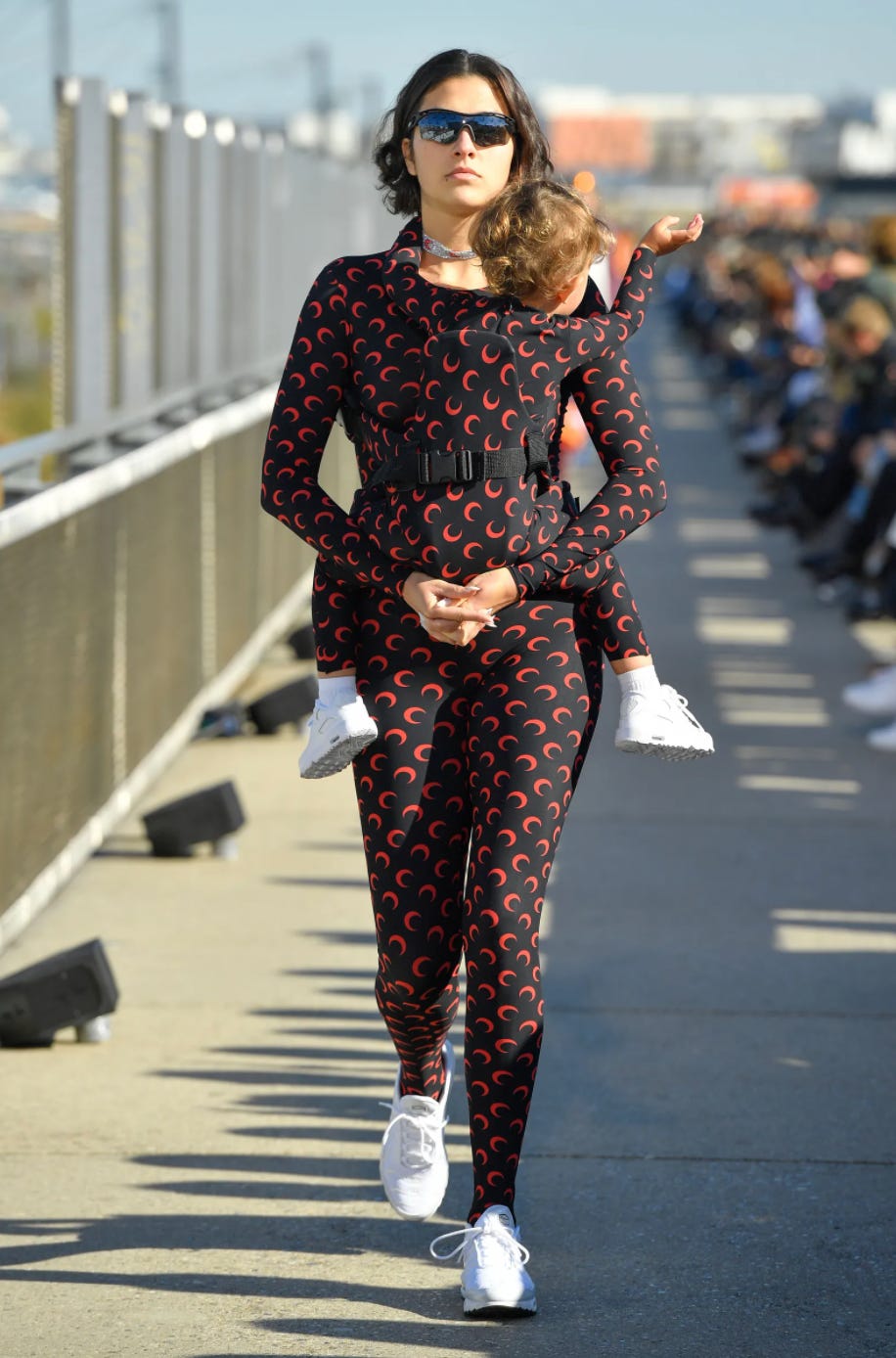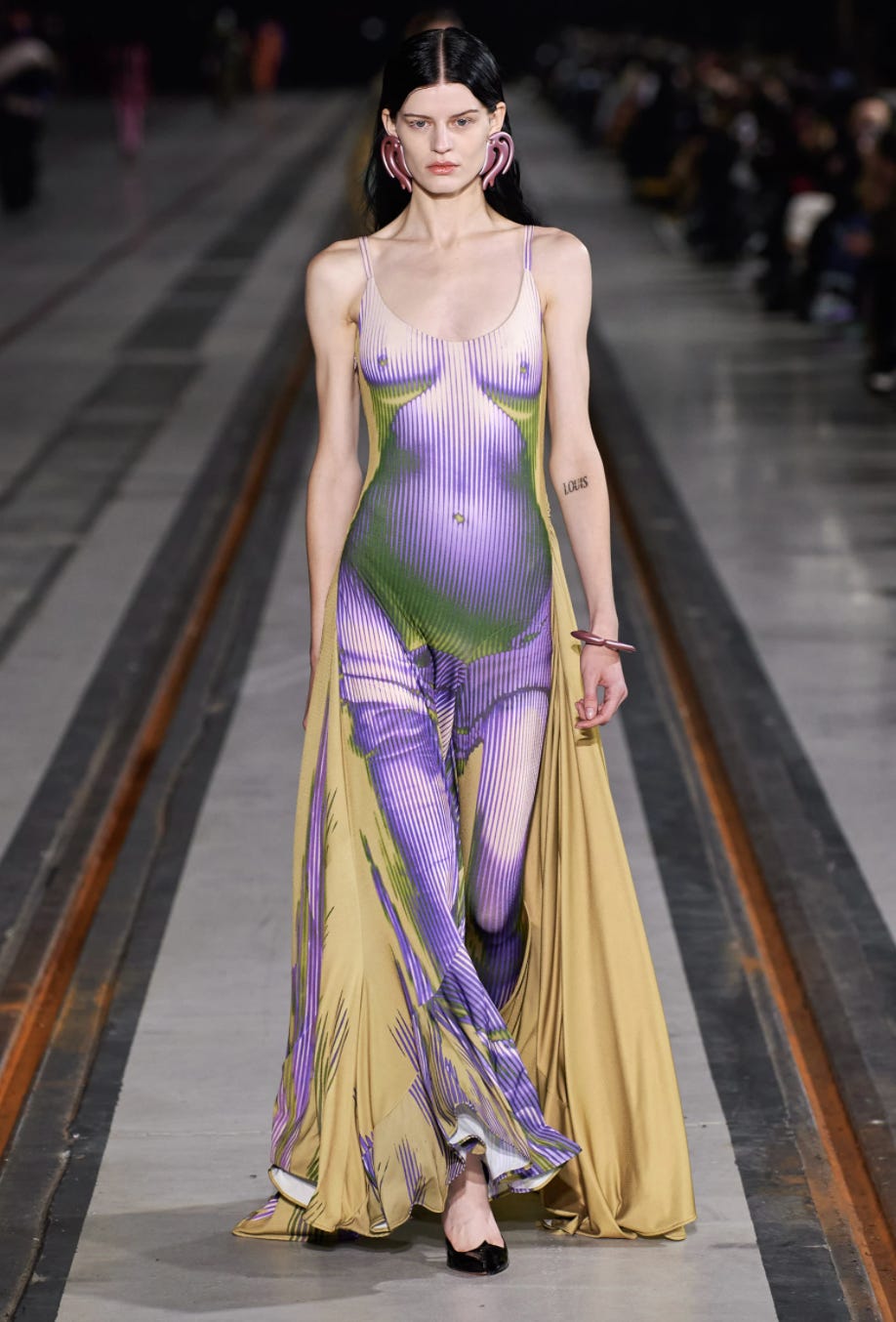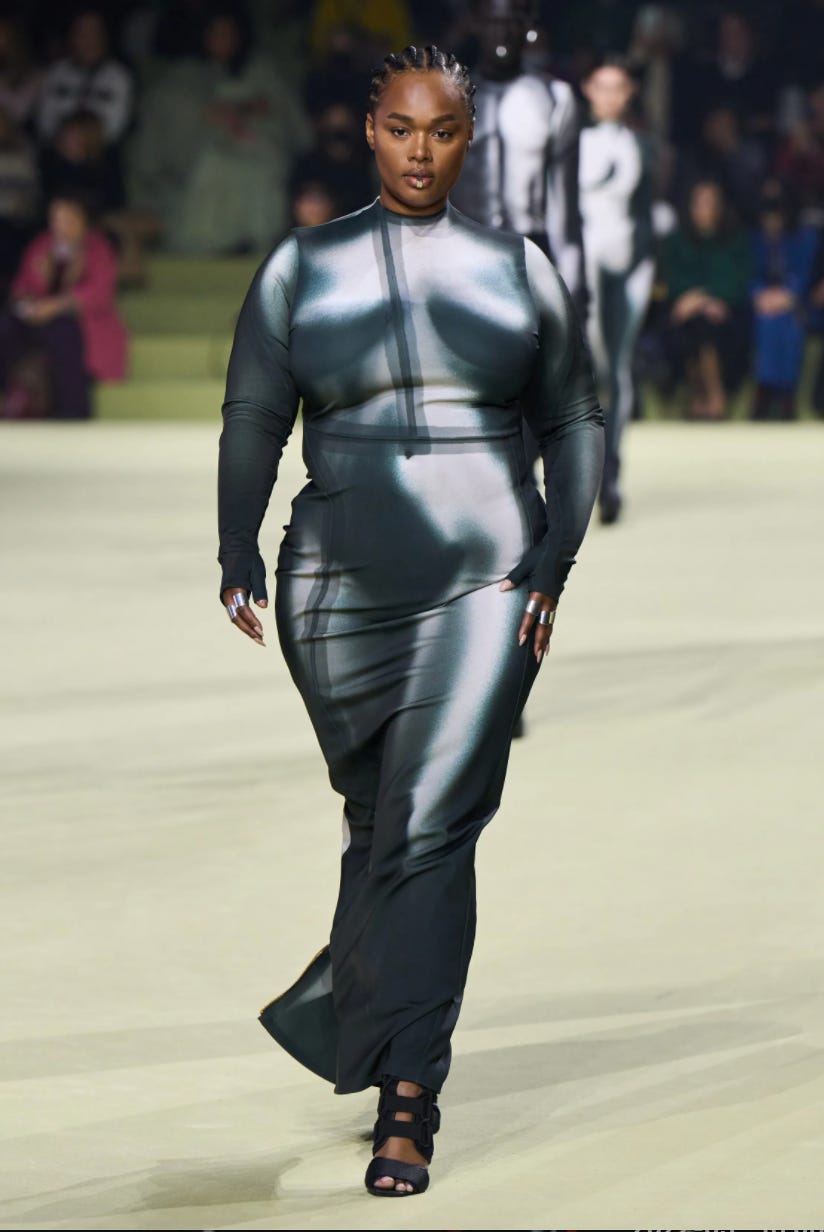Coined during a memorable Sex and the City scene where Carrie Bradshaw reveals the nude slip she is wearing for her first date with Mr. Big, the outfit is dubbed by best friend Charlotte as ‘the naked dress’. This is followed by a comment from Miranda claiming Carrie ‘looks like sex’ and a debate regarding the *rules* around having sex on a first date ensues. With connotations of sexual liberation, freedom, and power, the somewhat contradictory concept behind the naked dress is to suggest nudity whilst still being clothed.
Fairly ornamental and impractical, the naked dress has long been conceived as an aesthetic element of particular pop culture moments. From Kate Moss’ iconic sheer slip dress at the Elite Model Agency Look of the Year party in 1993 to Megan Fox’s mermaid-inspired sheer Mugler gown at the 2021 VMAs, the link between the naked dress and iconic media moments evidences the direct relationship between fashion and celebrity. Certainly, with events like the MET gala and the commonality of celebrity-endorsed brand campaigns, fashion and celebrity are already implicitly linked. Notably, in her book entitled Fashion and Celebrity Culture, Pamela Church Gibson explores the ways in which celebrity culture has shaped the fashion system and the subsequent interdependency between the two.


One of the most notable iterations of the naked dress as a key material object in a media moment is Marilyn Monroe’s skintight flesh-coloured crystal-embellished Jean Louis gown. Worn during Monroe’s iconic performance of ‘Happy Birthday Mr. President’, she famously serenaded John F Kennedy on his 45th birthday. The iconic dress was described by Martin Nolan, executive director of Julien’s Auctions as ‘historical…political…a work of art [and representative of] a defining moment in history.’

Historically, the prevalence of the naked female body inherently possesses connotations of fertility. Throughout its various artistic depictions, naked women are typically reduced to their reproductive functions and matriarchal archetypes (evidenced in famous works such as the sculpture Venus of Willendorf and the Greek goddess Aphrodite). Certainly, attitudes around the world differ towards nakedness, but the overwhelming social conditioning of the female nude is predominantly associated with objectification and judgment. In recent years, the dominant feminine ideal is being reclaimed, ultimately prevailing against the overtly sexual ways in which society views the female body.
Whilst some argue that misogynist ideals are being internalised through the naked dress, allowing for the body to become further objectified and viewed through the male gaze. Others argue that the agency of the wearer allows for a type of liberation - transforming the naked dress into a powerful tool of statement nudity with women in command of their own bodies. In fact, Rose Mcgowan wrote in her memoir Brave that the barely-there beaded dress she wore to the 1998 VMAs was ‘a reclamation of [her] own body after [her] assault.’ Across various red carpet events, we have seen female celebrities don this style of dress in a powerful act of reclamation, from Amber Rose in Laurel DeWitt at the 2014 VMAs, to Beyonce in Givenchy at the 2015 Met Gala, and Rihanna’s crystal-embellished Adam Selman dress at the 2014 CFDA Awards (a style which continues throughout her current pregnancy in her convention-defying maternity wear).

Contrastingly, ‘the new naked dress’ communicates these concepts of empowerment in a fully-clothed way, using skin-tight stretchy fabric and striking graphic prints. Springing off the back of the second-skin trend notably popularised by Marine Serre as the stand-out trend of 2020, graphic-printed jumpsuits and mesh tops have paved the way for the return of suggestive ‘Trompe l’oeil’ graphics. Tate describes this French phrase as ‘deceives the eye’, an artistic technique used to describe paintings that create the illusion of realistic imagery or an optical illusion.

Jean Paul Gaultier’s AW95 collection entitled Cyber arguably kickstarted the trompe l’oeil movement in fashion. Drawing inspiration from optical artist Uta Cirelli, this show spoke to ideas of technology and futurism through op-art skin-tight garments. The following year during Gaultier’s SS96 collection entitled Cyberbaba, these themes were expanded upon further. Clothing was printed with life-sized nudes, blurring the lines between clothed and unclothed with a simulacrum of nakedness, cementing Gaultier’s trompe l’oeil legacy and its subsequent ubiquitous influence.

Recently, i-D reported on ‘screen-printed nipples, digitally-rendered curves and even the errant photo-real penis’, as multiple brands continue to utilise innovative printed patterns to communicate the concept of nakedness in a contemporary way. Glenn Martens’ AW22 Y/Project collection drew inspiration from a classic Jean Paul Gaultier archival print, combining a life-size nude image with a contrasting digitised motif. The new naked dress draws on this concept, offering a level of accessibility beyond celebrity culture and red carpet media moments. Whilst the female body continues to be policed and scrutinised in society, the transformation of these ideas are being explored on the runway by designers such as Sinead Gorey and Loewe. Furthermore, Balmain’s AW22 collection saw life-size Trompe l’oeil graphic prints which communicated the concept of protection against the perils of social media culture. Crafted as a form of metaphorical bodily protection, the garments were intended as ‘an armour against online image dysmorphia’, once again reiterating the empowering core of the second-skin trompe l’oeil naked dress.


Ultimately, through the reclamation of hypersexualized femininity, the naked dress challenges stereotypes whilst breaking down the power imbalances between subject and artist. Reclaiming power is key to dismantling the misogynistic ideals projected onto the female form, allowing for the wearer to adorn their bodies (as much or as little as they wish) and in turn re-gain control of their own image. Displaying rebellion against both physical sculpting and digital editing of bodies, the new naked dress holds the power of its sheer/nude predecessor, whilst advancing its communicative capacity. In an age of nude selfies, multi-faceted identities, and gender fluidity, the new naked dress embraces contemporary ideas of liberation and celebration with startling prescience. In an age where digital culture leads fashion trends and movements evolve from screen to runway, the concept of an armoured second skin simulating nakedness results in a new naked dress for the post-digital age.



